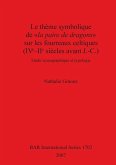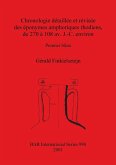In the cemeteries of Graeco-Roman Alexandria in Egypt, archaeological investigations initiated more than a century ago discovered various water systems adapted for specific funerary purposes. From the foundation of the city in 332 B.C. to the third century A.C., over fifty hydraulic installations have been noted within the records of Alexandria itself and its vicinity. From a corpus that inventories the hydraulic structures identified to this day in the archaeological literature, the different water management systems are described and reasons put forward to explain the presence of these devices (wells, cisterns, basins, etc.). The results show that the cemeteries should not just be considered as a 'cities for the dead' but also as places of rebirth and life. Some of the devices discovered within the funerary context have echoes in the libation systems already known in the Mediterranean and lead towards an evaluation, from textual and iconographical documents, of the role of water in the offerings to the Alexandrian dead.








